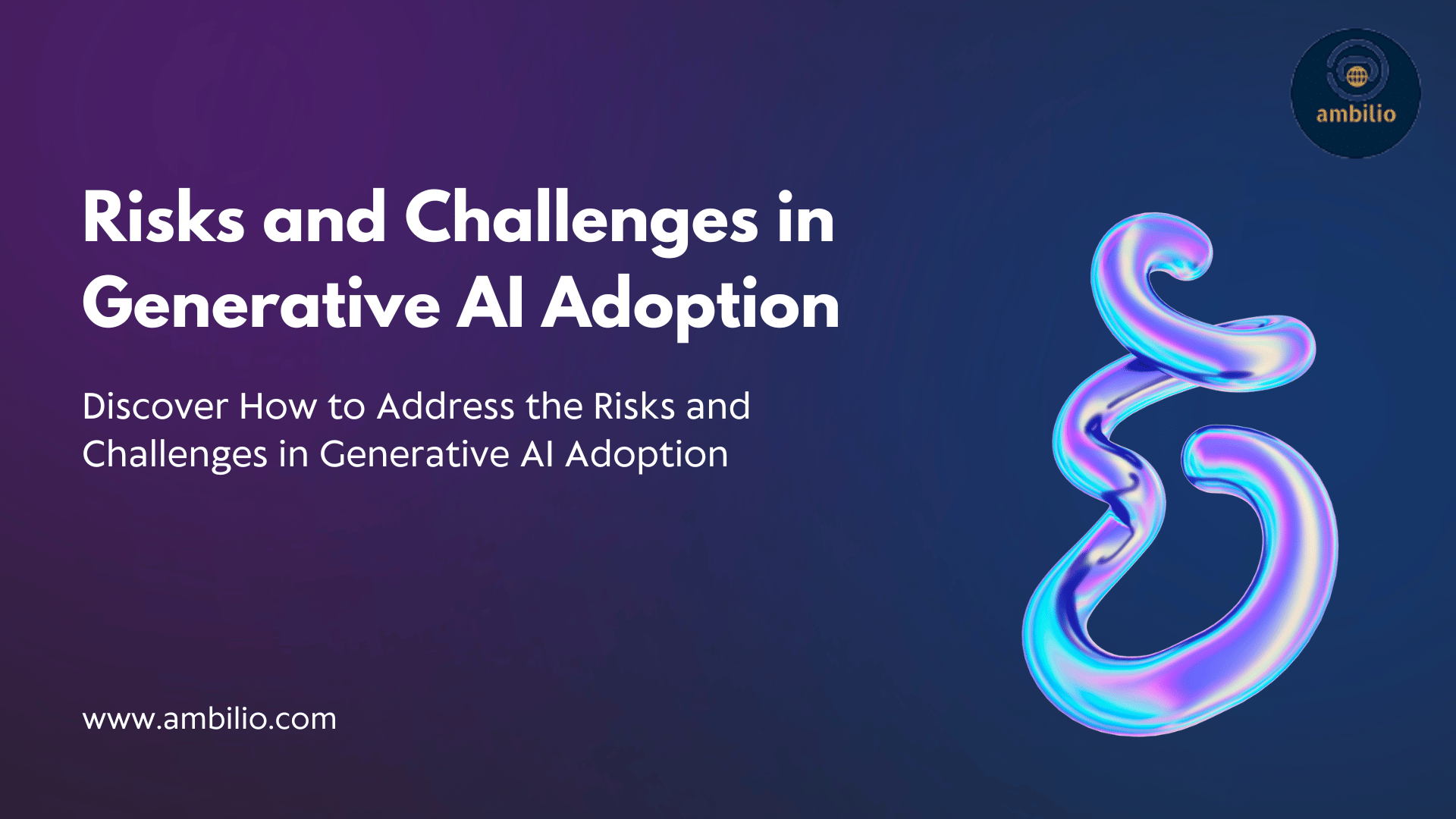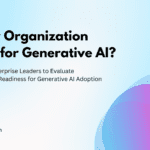Generative AI has rapidly emerged as a transformative technology, offering unprecedented capabilities in automating and enhancing various business processes. However, alongside its benefits, Generative AI also presents several risks and challenges that organizations must address to ensure successful deployment and integration. This article explores the primary Risks and Challenges in Generative AI Adoption, such as inaccuracies, cybersecurity threats, explainability issues, and regulatory compliance. It also discusses the significant data management challenges that are critical for leveraging AI technologies to their fullest potential.
Risks and Challenges in Generative AI Adoption
Inaccuracy
The most significant risk associated with generative AI is inaccuracy. According to recent reports, nearly a quarter of organizations have encountered negative consequences due to AI inaccuracies. These inaccuracies can manifest in multiple ways, affecting diverse applications from customer service interactions and content summarization to coding assistance and creative outputs. For example, inaccuracies in AI-generated customer responses can lead to misunderstandings and customer dissatisfaction, while errors in content summarization can result in the dissemination of incorrect information. In the realm of creative outputs, inaccuracies might lead to suboptimal or misleading creative content, undermining the value and effectiveness of AI applications
Cybersecurity Threats
In addition to inaccuracy, organizations are also grappling with concerns related to cybersecurity. About half of the surveyed organizations view cybersecurity as a critical risk, recognizing that AI systems can be vulnerable to attacks and data breaches. AI models often require vast amounts of data, which can include sensitive information. This makes them attractive targets for cybercriminals. Protecting AI models and the data they process from cyber threats is essential to maintain trust and integrity.
Explainability Issues
Explainability remains another significant concern. As AI systems become more complex, understanding and interpreting their decision-making processes becomes challenging. This lack of transparency can hinder the ability to diagnose errors, ensure fairness, and comply with regulatory requirements. Explainability is particularly important in sectors like finance, healthcare, and legal services, where decisions made by AI can have profound implications.
Regulatory Compliance
Regulatory compliance is also a pressing issue. With the evolving landscape of data protection laws and industry-specific regulations, organizations must ensure that their AI systems adhere to legal standards. Failure to comply can result in severe penalties and damage to reputation. Hence, organizations must stay abreast of regulatory changes and incorporate compliance measures into their AI governance frameworks.
Addressing Inaccuracy and Related Risks
Organizations are increasingly aware of the importance of mitigating these risks. Compared to the previous year, there has been a notable shift towards proactive risk management strategies. Here are some approaches organizations are adopting to address these risks:
Combating Inaccuracies and IP Infringement
One area of focus is addressing inaccuracies and intellectual property (IP) infringement. To combat these issues, organizations are implementing rigorous testing and validation protocols to ensure the accuracy of AI outputs before deployment. This includes conducting extensive pre-deployment testing, continuous monitoring of AI performance, and iterative refinement based on feedback and observed errors.
Enhancing Cybersecurity Measures
Cybersecurity remains a top priority, with organizations investing in advanced security measures to protect their AI systems. This includes encrypting data, conducting regular security audits, and employing AI-driven security solutions to detect and respond to threats in real-time. Additionally, organizations are developing robust incident response plans to swiftly address any breaches or security incidents that may occur.
Improving Explainability
To tackle explainability challenges, organizations are adopting techniques such as model interpretability tools and explainable AI frameworks. These tools help demystify AI decision-making processes, making it easier for stakeholders to understand and trust AI systems. Techniques like LIME (Local Interpretable Model-agnostic Explanations) and SHAP (SHapley Additive exPlanations) are becoming standard practices in the industry. Additionally, integrating explainability into the development lifecycle of AI models ensures that transparency is considered from the outset.
Ensuring Regulatory Compliance
To ensure regulatory compliance, organizations are incorporating compliance checks into their AI development and deployment processes. This includes conducting regular audits to ensure adherence to data protection laws, implementing privacy-by-design principles, and maintaining thorough documentation of AI processes and decision-making pathways. By embedding compliance into the fabric of AI operations, organizations can mitigate legal risks and build trust with stakeholders.
Data Challenges
High-performing organizations face significant data-related challenges that are crucial for maximizing the benefits of AI technologies. Effective data management encompasses several key aspects:
Defining Data Governance Processes
Establishing robust data governance frameworks is essential to ensure the quality, privacy, and security of data used in AI models. This involves creating policies and standards for data collection, storage, processing, and sharing. A well-defined governance structure helps in maintaining data integrity and compliance with regulatory requirements.
Integrating Data Quickly
The ability to rapidly incorporate new data into AI models is critical for maintaining the relevance and accuracy of AI outputs. Organizations need to develop efficient data integration pipelines that facilitate seamless data flow from various sources to AI systems. This agility enables AI models to learn from the latest data and improve their performance continuously.
Maintaining Sufficient Training Data
Ensuring a continuous supply of high-quality training data is vital for the effective functioning of AI systems. Organizations must invest in data collection and curation efforts to build diverse and representative datasets. Additionally, techniques such as data augmentation and synthetic data generation can help in expanding training datasets and enhancing model robustness.
Final Words
The adoption of GenAI offers significant potential benefits for organizations, but it also introduces various Risks and Challenges in Generative AI Adoption that need to be managed proactively. Inaccuracy remains the most prevalent issue, necessitating diligent risk mitigation strategies. Concurrently, robust data management practices are critical for high-performing organizations to sustain and maximize the value derived from AI technologies. By addressing these challenges, enterprises can better harness the transformative power of generative AI while mitigating associated risks.
In conclusion, while generative AI presents exciting opportunities, it is imperative for organizations to approach its adoption with a balanced perspective. Implementing comprehensive risk management and data governance strategies will enable enterprises to unlock the full potential of generative AI, driving innovation and competitive advantage in an increasingly digital world. By proactively addressing the risks and data challenges, organizations can ensure that their AI initiatives are not only successful but also sustainable and trustworthy.



